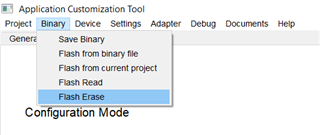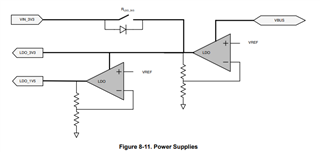Other Parts Discussed in Thread: TPS65988DJ, TPS65987, TPS65988, TPS25751, TPS65988DK
Tool/software:
Hello, does the Application Customization Tool support the evaluation board: TPS65988EVM, as it doesn’t seem to be an option in the application tool v6.1.4. The example document seems to show that it does (v6.1.2), although I can’t find that particular version. I just want to address this discrepancy before purchase. Thank you.
Follow-up question is there any way to use the TPS65988DJEVM, even though not building on the Intel architecture.




